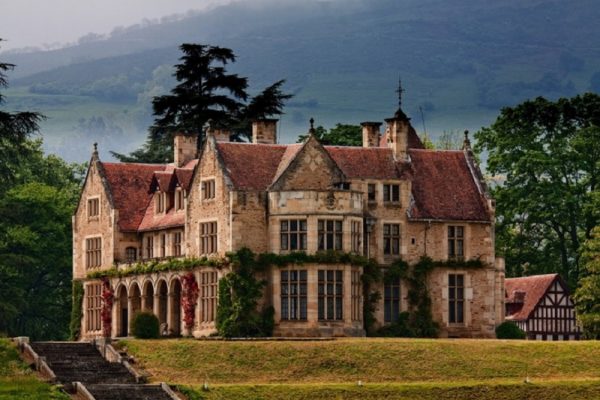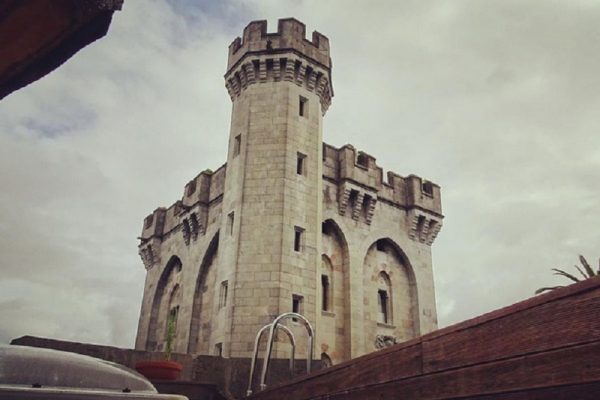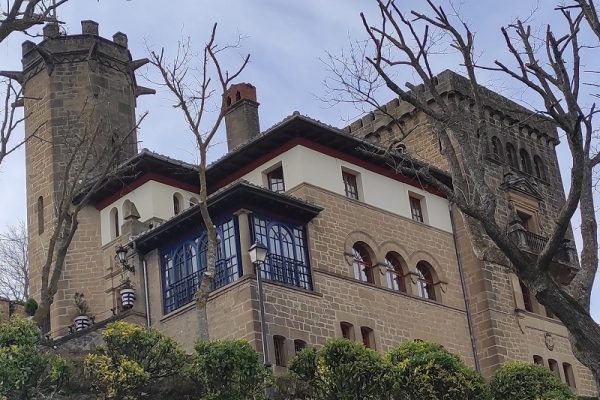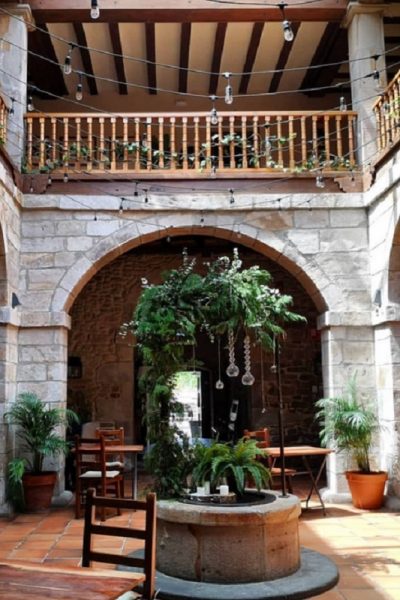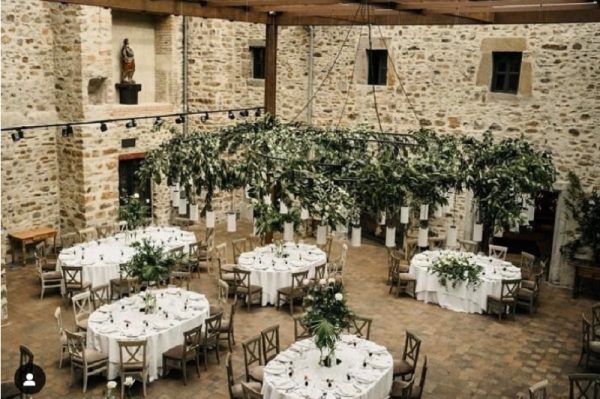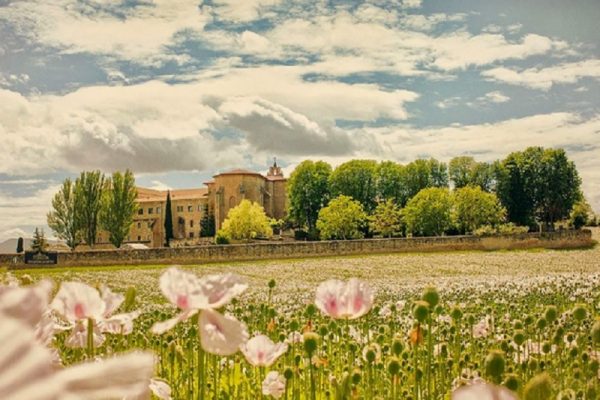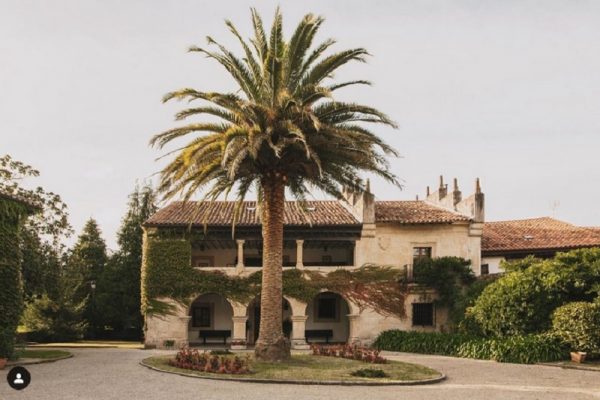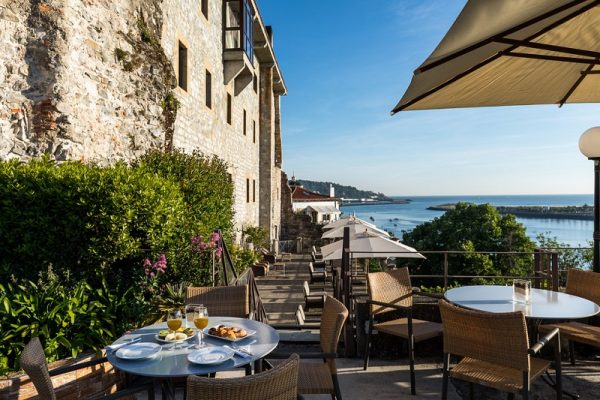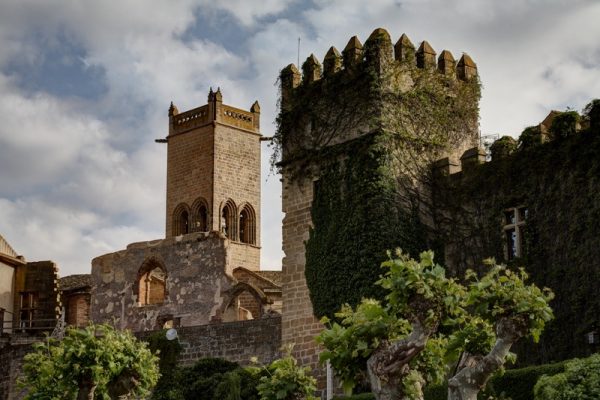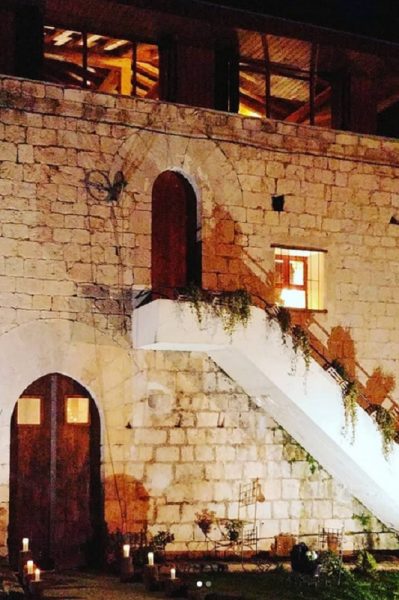Yes, in Northern Spain we also have unique buildings if what you are looking for is a fairytale wedding. Not only castles, palaces or traditional houses in the area, but also old fortresses or religious buildings restored and converted into wonderful wedding venues. The selection has been difficult, but here you have my top ten (in strict alphabetical order) of unique historical venues that I really love. I have not included any “caseríos” (farmhouse), because they deserve my full attention in a future post dedicated exclusively to them.
Casona de las Fraguas (Las Fraguas-Cantabria)
The history of this building dates back to the end of the 17th century, built at the request of the marquise of Cilleruelo. This first house was the family home for several generations; until in the year 1900 the Duke of Santo Mauro (great-grandfather of the current owner) built the Palacio de los Hornillos on the same estate, the predecessor of the Palacio de la Magdalena. The building, conditioned for the celebration of weddings and events, has historical elements of great personality, such as the main staircase, the solarium or the windows and stone shields. Not to mention the wonderful romantic garden. And if you want to surprise in your religious ceremony, next to it is the Iglesia de San Jorge, in the shape of a Roman pantheon. Idyllic space where there are.
Castillo de Arteaga (Arteaga-Bizkaia)
Although a tower was already standing on this location in the 13th century, its current structure dates from the reconstruction carried out in 1856 by the French architects Couverchef and Ancelet. It was commissioned by the Empress Eugenia de Montijo (owner of the Arteaga site), who wanted to recover the tower as thanks for the appointment of her son, Eugenio Bonaparte, as a native of Biscay, by the Juntas Generales de Vizcaya. This is how this palace was built with its beautiful neo-Gothic tower inspired by French Gothic. In addition, the suites and rooms have all the luxury of details that transport you to another era.
Castillo El Collado (Laguardia-Álava)
This boutique hotel stands on what was a castle from the early 19th century, built in turn with the original stones of the old 12th century barracks, known as the Cuartel del Rey. In addition to its tower with wonderful views of the vineyards and wineries that surround Laguardia, its ten original rooms stand out. All of them different and named after a fable, as a tribute to the magical world of the fabulist Felix María de Samaniego, a native of the town.
Convento de San Roque (Balmaseda-Bizkaia)
The Hotel Convento de San Roque is located in the building that used to be the old monastery of Santa Clara, built and opened for prayer in the 17th century. The confiscations of the 19th century destroyed a large part of its assets and the high maintenance costs made the Clarisa nuns abandon it in 1984. Its declaration as an asset of cultural interest by the Diputación Foral de Bizkaia, saved it from being demolished. Later it was acquired by an individual and rehabilitated as a hotel respecting some unique points of the original building, such as the well, the stairs or the location of the rooms in the place where the old cells of the novices or the mother superior used to be.
Komentu Maitea (Gordexola-Bizkaia)
This hotel is located in the marvelous convent of Santa Isabel, from the 18th century. It was occupied by Clarisas nuns until they abandoned it in 1980. In 2010 it was transformed into a hotel-restaurant, preserving some of its original rooms, such as the cloister, the old chapel (currently deconsecrated and converted into a dining room) or the nuns’ cells converted into cozy bedrooms. The old lathe through which they passed food and other things they needed is also preserved. This ideal place for peace and rest has been run since 2015 by former soccer player Juan Antonio Zaldua, also owner of Baserri Maitea, in Forua.
Monasterio del Espino (Santa Gadea del Cid-Burgos)
This Gothic-style Benedictine monastic complex dates back to the early 15th century. It currently belongs to the Redemptorist missionaries who, in addition to continuing their religious work, have adapted the space to the 21st century, offering it for the celebration of weddings and social events. Its imposing church, the Patio de San Alfonso with the gardens and the cloister (current dining room) surrounded by the rooms located in the cells stand out. And if what you are looking for is a wedding in the purest American style, its famous Granero de San Francisco (an original barn), is also part of the complex.
Palacio de Caranceja (Caranceja-Cantabria)
The Caranceja complex, from the 17th century, consists of two buildings recovered from the town’s past. The main building is a rehabilitated palace with Renaissance reminiscences. The other, an old work shed recovered preserving the mountain aesthetics. Its beautiful gardens and the tent completely integrated into the environment make it a dream place.
Parador de Hondarribia (Hondarribia-Gipuzkoa)
On the border with France, on the Bidasoa River, stands the Castillo de Carlos V, the current Parador de Hondarribia. It is a 10th century construction for military defense where the Catholic Monarchs, Emperor Carlos V, Felipe IV and V, and even Velázquez himself stayed. Inside, great treasures are preserved, such as the tapestries designed by Rubens with the theme of the Story of Achilles. Its two dinning rooms, the Gala one or the Emperor Carlos V one, are perfect for intimate events with a lot of character.
Parador de Olite (Olite-Navarra)
The Parador de Olite is located within the monumental complex of Olite, next to the medieval castle. It occupies part of the Palacio Real, built on the old palace of the Kings of Navarra from the early fifteenth century. Part of this complex was burned during the War of Independence and abandoned, until the Gobierno de Navarra bought it and carried out the rehabilitation works. Thus, the Parador occupies the oldest part that is preserved, that of the Palacio Viejo, with its original towers and battlements. Its classic and luxurious decoration makes one transport to that time feeling like a medieval nobleman.
Torre Fagoaga (Oiartzun-Gipuzkoa)
Fagoaga Dorretxea (tower house in Basque), is a tower from the end of the 15th century. It was the former residence of the Fagoaga family, important ironmongers of the time. Its loopholes, the large entrance gate and its original walls, more than one meter wide, draw attention. Its views towards the Peñas de Aya Natural Park (Aiako Harriak in Basque) are unbeatable.
Which one do you prefer?


